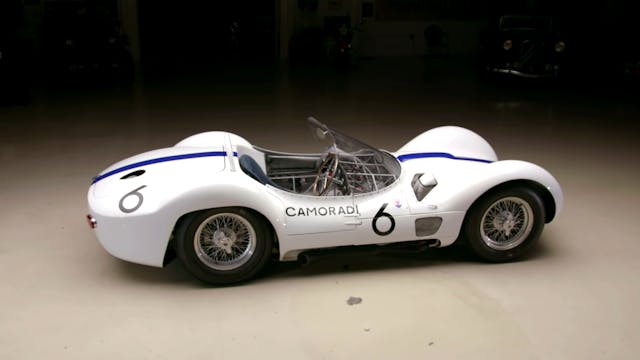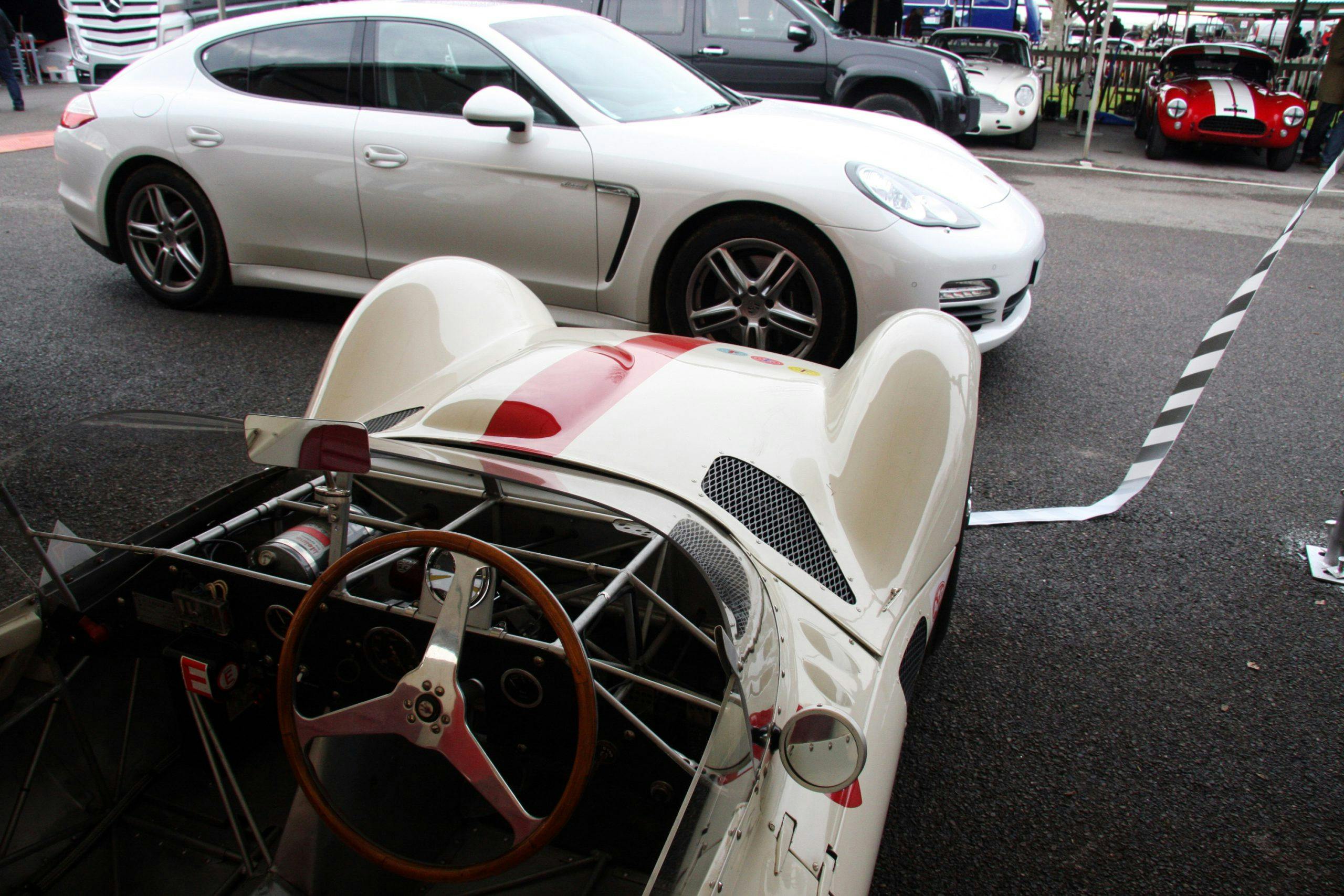How the Maserati Birdcage became the lightest Le Mans car of 1960
By 1958, Maserati was rather short on cash and in need of a design that could be successful on the race track. In order to produce such a machine, brilliant engineer Giulio Alfieri decided to make the most of Le Mans regulations, lightening Maserati’s chassis to the absolute minimum while still using four-cylinder power. For the Tipo 60 first tested by Stirling Moss in May 1959, Alfieri’s team welded around 200 tiny steel tubes to form a cage-like structure, adding a 2.0-liter four-cylinder and an alloy body with a deeply recessed windshield. This ultra-low seating position would also result in massive wheel wells, under which lay the latest in tire development.
Since this 150-pound “Birdcage” chassis cracked during early testing, Maserati quickly switched to a different grade of chro-moly steel tubings. Moss then won his first race with the Tipo 60. After six units were made, the Modena factory moved on for 1960 to the Tipo 61, essentially the same car with a 2.9-liter four-cylinder instead of a 2.0.
The Tipo 61 was a 250-horsepower race car that weighed under 1350 pounds. Carroll Shelby was one Tipo 61 driver, and the American Camoradi team for which he drove ordered six of the seventeen examples made in total. At Le Mans, year after year, these Maseratis would fail due to reliability and weatherproofing issues. The Americans did, however, win the 1000 km of Nürburgring with a Birdcage both in 1960 and ’61 .
More than six decades later, Maserati is now developing a new supercar to take racing, called the MC20. Its previous entrant, the MC12, won 40 races out of 92, bringing six drivers’ championships home, along with two for Maserati as a constructor. Instead of small metal tubes, the MC20 will honor its trident badge with plenty of carbon fiber and a tribute to Stirling Moss. Until that car is ready, let Jay Leno take you for a ride in the number five of six total Camoradi Tipo 61 Birdcages.





